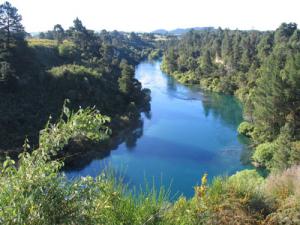Otorohanga dairy farmer Laurie Pottinger says good work in the fencing of waterways has noticeably improved water clarity in catchments.
Pottinger supports work led by the Waikato Regional Council to improve the water quality in the Waipa and Waikato rivers.
Submissions for the Healthy River Plan Change closed last week.
“As a farmer I feel comfortable with the Healthy River Plan Change. I am making a submission as I feel there are several small improvements that can be made,” says Pottinger.
She says the collaborative stakeholder group (CSG) process has proposed a responsible solution addressing the main four contaminants in the river.
“The issues on nitrogen, in my view, are more about protecting the long term health of our water.”
“The CSG has taken a responsible stance on the nitrogen issue with the upper quartile of nitrogen leaches having to achieve lower levels below the 75th percentile. True grandparenting would have rewarded the extreme end of nitrogen loss farmers.”
The CSG process is giving farmers a comprehensive understanding of what the contaminants are and where they are coming from.
“Knowing this allows everyone to contribute to the solutions. For example, for phosphate it has been identified that 45% comes from farms -- all farms, not just dairy -- while 18% comes from point sources (industry and town sewage, with Hamilton’s sewage pipe contributing 6.7%).”
DairyNZ’s Adrian Brocksopp worked with Waikato farmers to inform them about the proposed regulations. 115 farmers at eight recent district meetings organised by DairyNZ learned how to make submissions, and contribute to a DairyNZ submission being made on behalf of all Waikato dairy farmers.
“These farmers know what the implications are for their farms and businesses, and they want to be heard on their concerns and opinions. We’ve worked with them on the content of their submissions, and guided them in their writing.
“They know they need to participate in discussions about what happens in their own back yards, and when it happens.
“It’s important that all farmers say how the proposed plan could impact their business and community, and put forward alternatives so they can meet the outcomes the plan is looking to achieve.”
The farmers met at Otorohanga, Te Awamutu, Tokoroa, Cambridge, Ngakuru, Gordonton, Tuakau and Ngatea.
Brocksopp says the district meetings follow events pre-Christmas when 850 farmers were introduced to the proposed regulations and the national policy on baseline contaminant levels for nitrogen, phosphate, sediment and E. coli.
A total of 46 meetings were held during the last two and a half years.


















